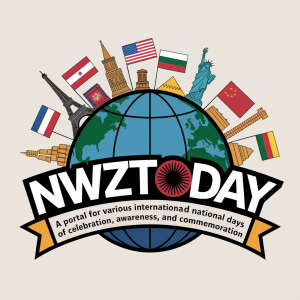Why Celebrate National Women and Girls HIV/AIDS Awareness Day?
Every year on March 10, the nation comes together to shine a spotlight on a critical health issue: HIV/AIDS and its impact on women and girls. National Women and Girls HIV/AIDS Awareness Day (NWGHAAD) serves as a rallying cry to educate, advocate, and inspire action around the prevention, treatment, and destigmatization of HIV/AIDS among women and girls.
The History Behind the Day
First observed in 2006, this awareness day was established by the Office on Women’s Health (OWH) under the U.S. Department of Health and Human Services. The goal was simple yet profound: to address the unique challenges faced by women and girls concerning HIV/AIDS. Over the years, NWGHAAD has become a platform for highlighting the progress made, the work remaining, and the stories of resilience that inspire hope.
Understanding the Significance
Did you know that women account for nearly 1 in 4 people living with HIV in the United States? Of these, African American and Latina women bear a disproportionate burden. NWGHAAD is not just about statistics; it’s about bringing these numbers to life by sharing real stories, breaking stigma, and ensuring that every woman and girl—regardless of race, ethnicity, or socioeconomic status—has access to the care and resources they deserve.
The day also underscores the importance of empowering women and girls with knowledge. By understanding their risk factors and accessing preventive measures like pre-exposure prophylaxis (PrEP), women can take charge of their health and futures.
How Is NWGHAAD Observed?
From coast to coast, communities come alive with events, workshops, and campaigns aimed at raising awareness and fostering dialogue. Here are some ways people observe this important day:
- Educational Workshops: Local health organizations host sessions to inform women and girls about HIV transmission, prevention, and treatment options.
- Community Testing Drives: Free and confidential HIV testing events encourage individuals to know their status.
- Social Media Campaigns: Hashtags like #NWGHAAD and #StopHIVTogether trend as people share stories, resources, and words of encouragement.
- Webinars and Panel Discussions: Experts and advocates discuss the latest advancements and strategies in HIV/AIDS prevention and care.
Fun Facts About HIV/AIDS
- The first cases of what would later be identified as AIDS were reported in 1981.
- HIV cannot be transmitted through casual contact like hugging or sharing utensils.
- Thanks to advancements in medicine, people living with HIV can lead long, healthy lives with proper treatment.
- Prevention methods like PrEP can reduce the risk of acquiring HIV by over 90%.
Call-to-Action: What Can You Do?
As we approach March 10, 2025, let’s commit to making a difference. Here’s how you can get involved:
- Educate Yourself: Learn about HIV/AIDS prevention and treatment to combat misinformation.
- Get Tested: Knowing your status is a powerful step toward protecting your health and the health of others.
- Spread Awareness: Use your voice—whether online or in person—to break stigma and encourage open conversations.
- Support Local Organizations: Volunteer, donate, or participate in events that promote HIV/AIDS awareness and care.
Together, we can create a future where every woman and girl has the knowledge, support, and resources to thrive. Mark your calendars for March 10, 2025, and join the movement to end HIV/AIDS stigma and promote health equity!









